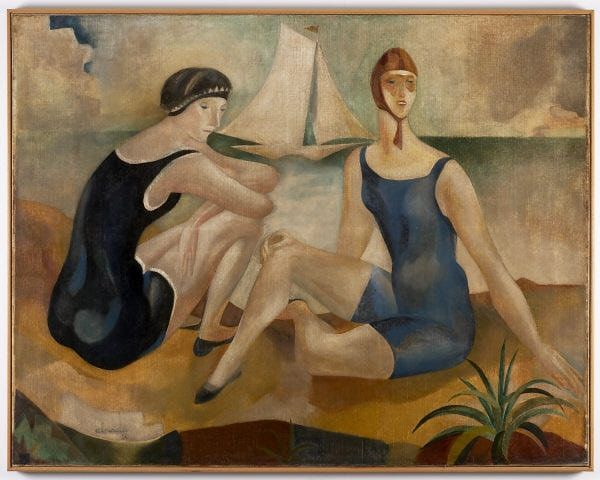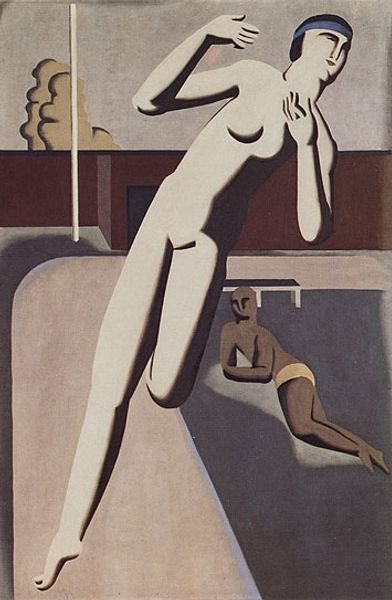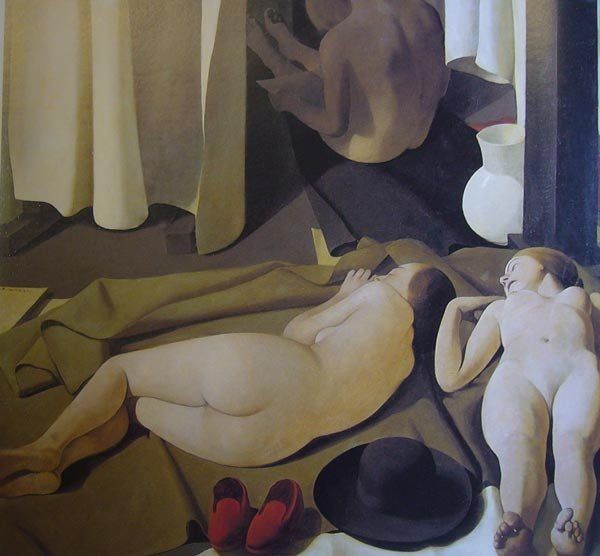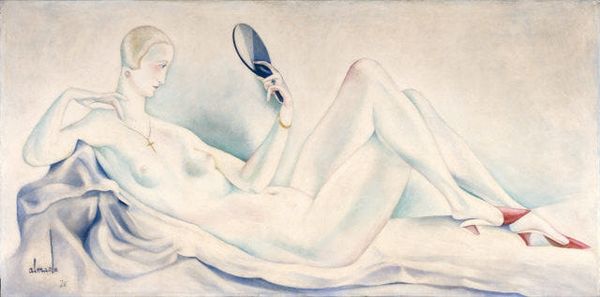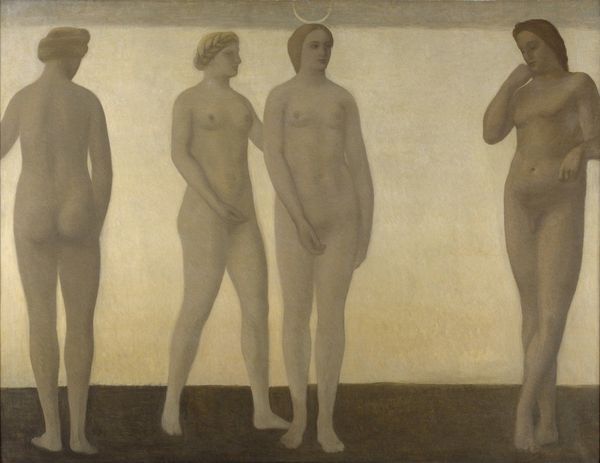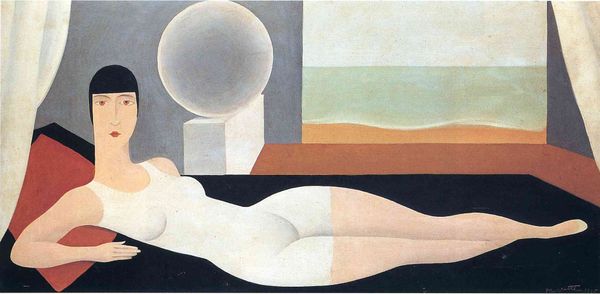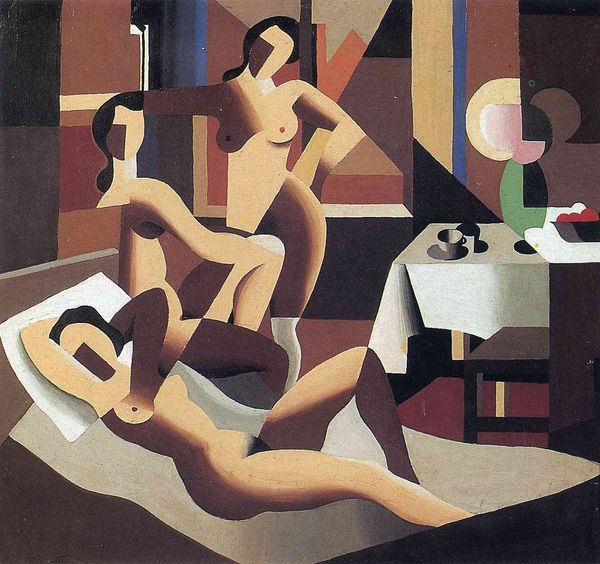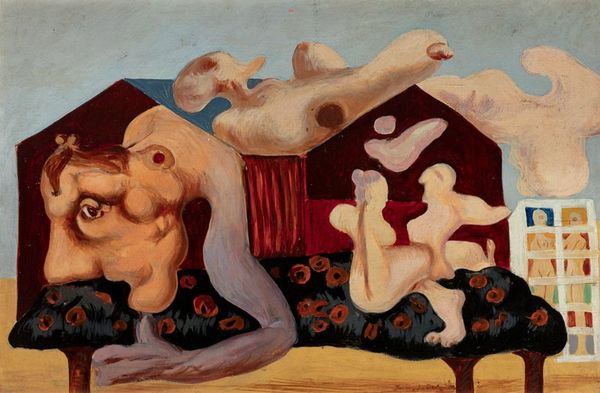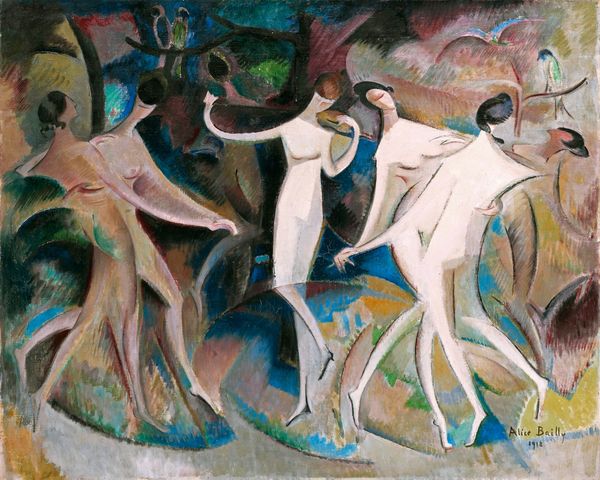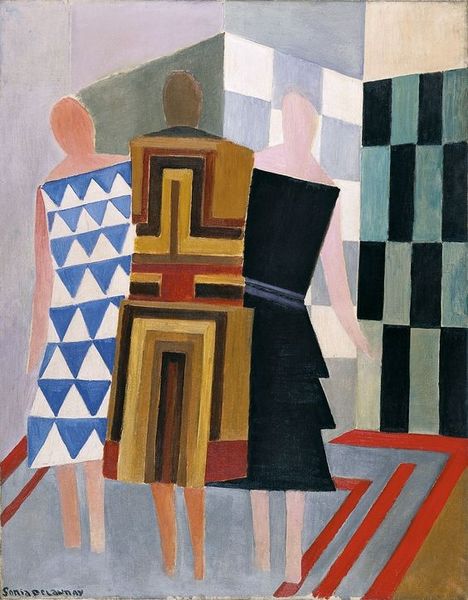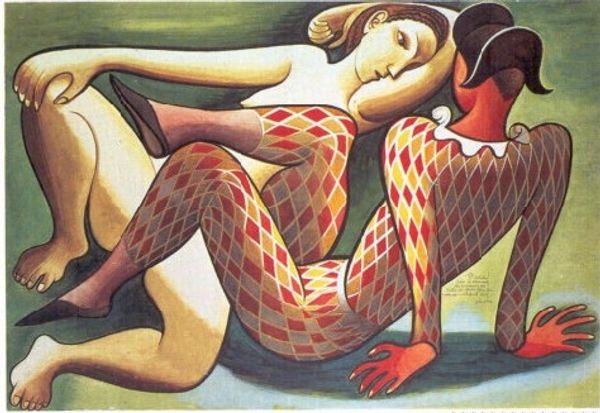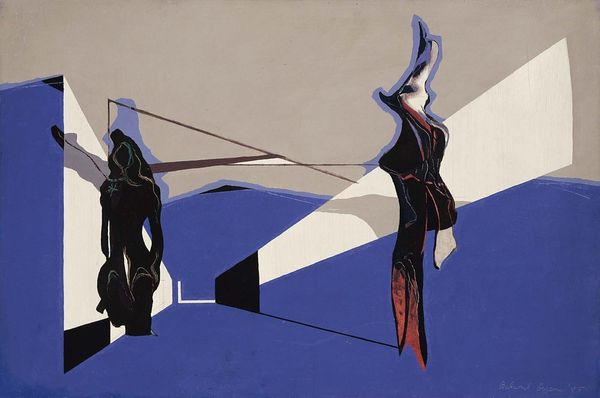
painting, oil-paint
#
portrait
#
painting
#
oil-paint
#
landscape
#
painted
#
figuration
#
painting painterly
#
genre-painting
#
modernism
#
realism
Copyright: A.C.Fine Art Inc.
Curator: Alex Colville's painting "Woman, Man, and Boat," dating from 1952, presents an intriguing tableau. What is your immediate impression? Editor: Stark. Utterly still. It evokes a profound sense of quiet unease, wouldn't you agree? Like a stage set waiting for a drama that never quite arrives. Curator: Precisely! Colville’s realism operates on that edge. We see a man in a boat, the woman wading in the water. They are separate, distinct, but interconnected through this act. Is the woman helping? Is she tethering him, preventing an escape? I feel an exploration about power dynamics and control. What about its making and its original showing interests you? Editor: What fascinates me is how this image sits within the anxieties of the Cold War period. Colville's restrained realism reflects a broader socio-political mood – a sense of uncertainty and of pending doom. His position as a war artist surely plays into his approach. The institutional support that allowed war artists to operate becomes a fascinating case study, wouldn't you say? Curator: Definitely. His experience during the war permeates his vision and this separation is quite compelling. She wears a crisp white dress; he looks rather less buoyant and free in drab pants and a matching hat. The tension is created through their poses, expressions, and that all-white boat almost bisecting the frame. Editor: Yes, and white itself has a certain neutrality, and perhaps a symbolic reference to ideas of purity and moral judgment of the time. This ties back into broader mid-century narratives surrounding gender roles and expectations. Colville, although considered a modern painter, he surely looked at what American and English realism presented on the screen, and even on magazine advertisement. Curator: His formal training comes across when viewing the artwork, though. It certainly provides insight into his position at the time. Editor: It’s truly a picture that invites such speculation. A snapshot of a marriage perhaps, or society itself on the brink of something. This makes us consider all institutions that influence art history narratives. Curator: And through that reflection, we find ourselves at a greater understanding of art's impact on how people perceive not only its production, but its message. Editor: Precisely. A fascinating image indeed, and hopefully a compelling opportunity for reflection.
Comments
No comments
Be the first to comment and join the conversation on the ultimate creative platform.
